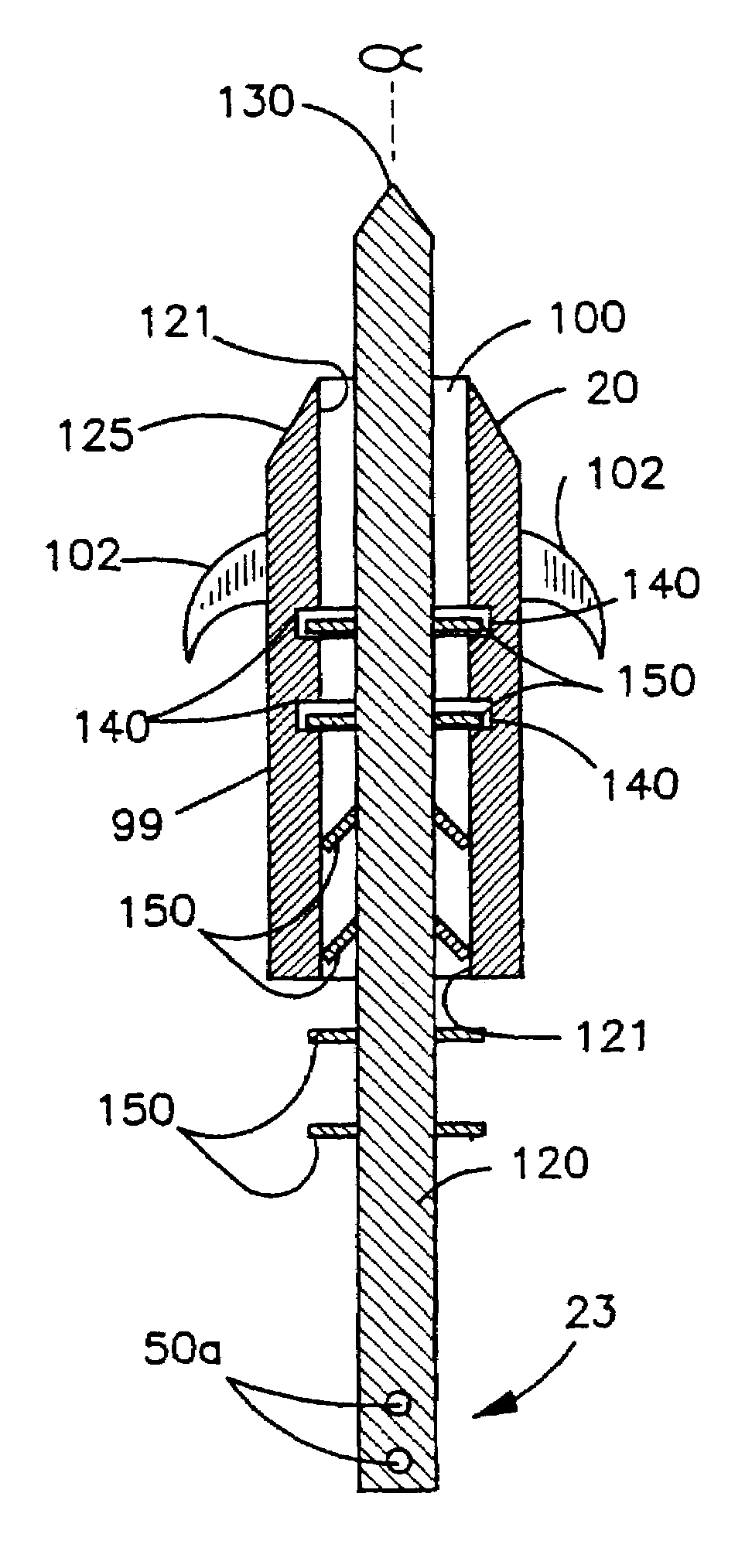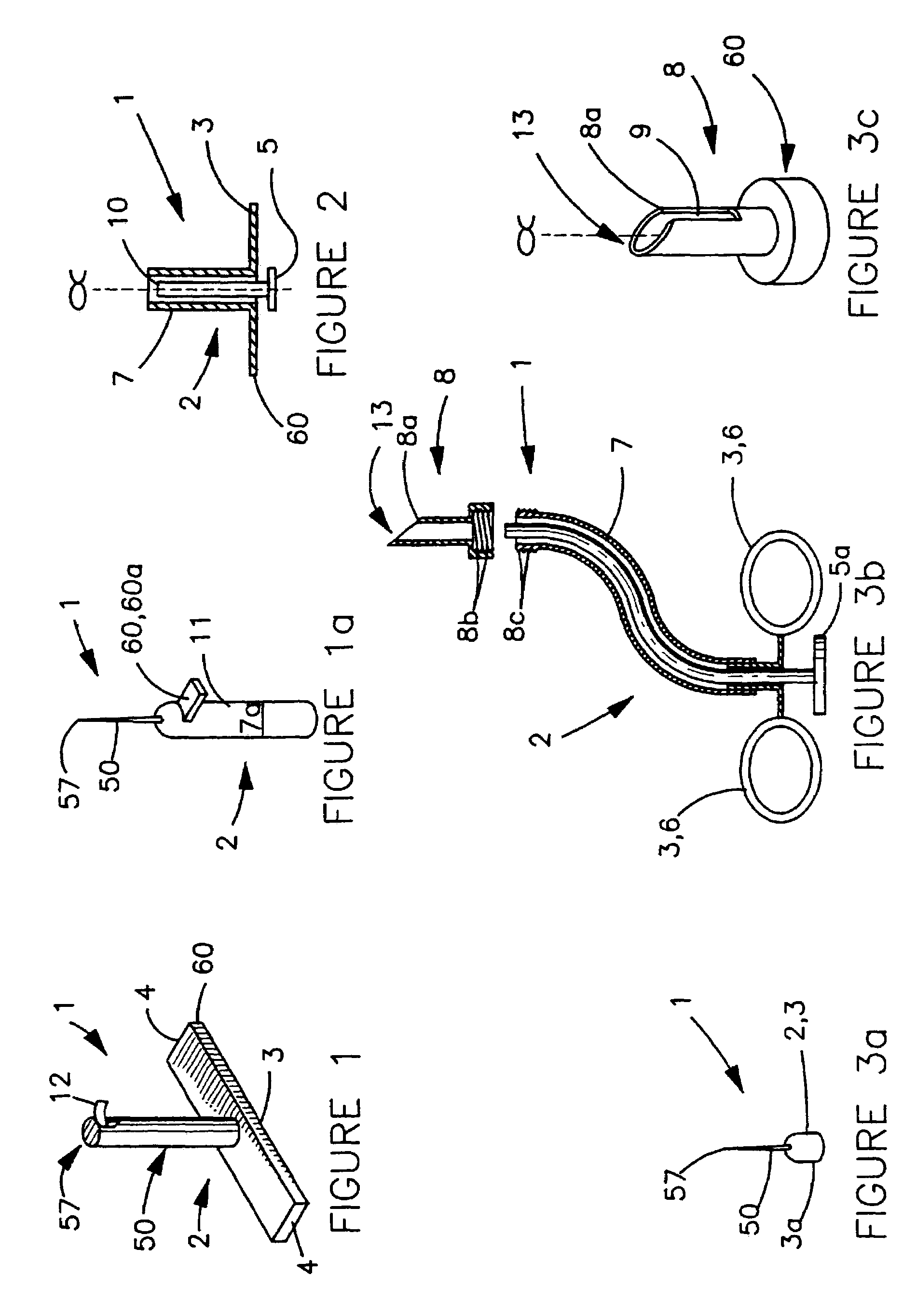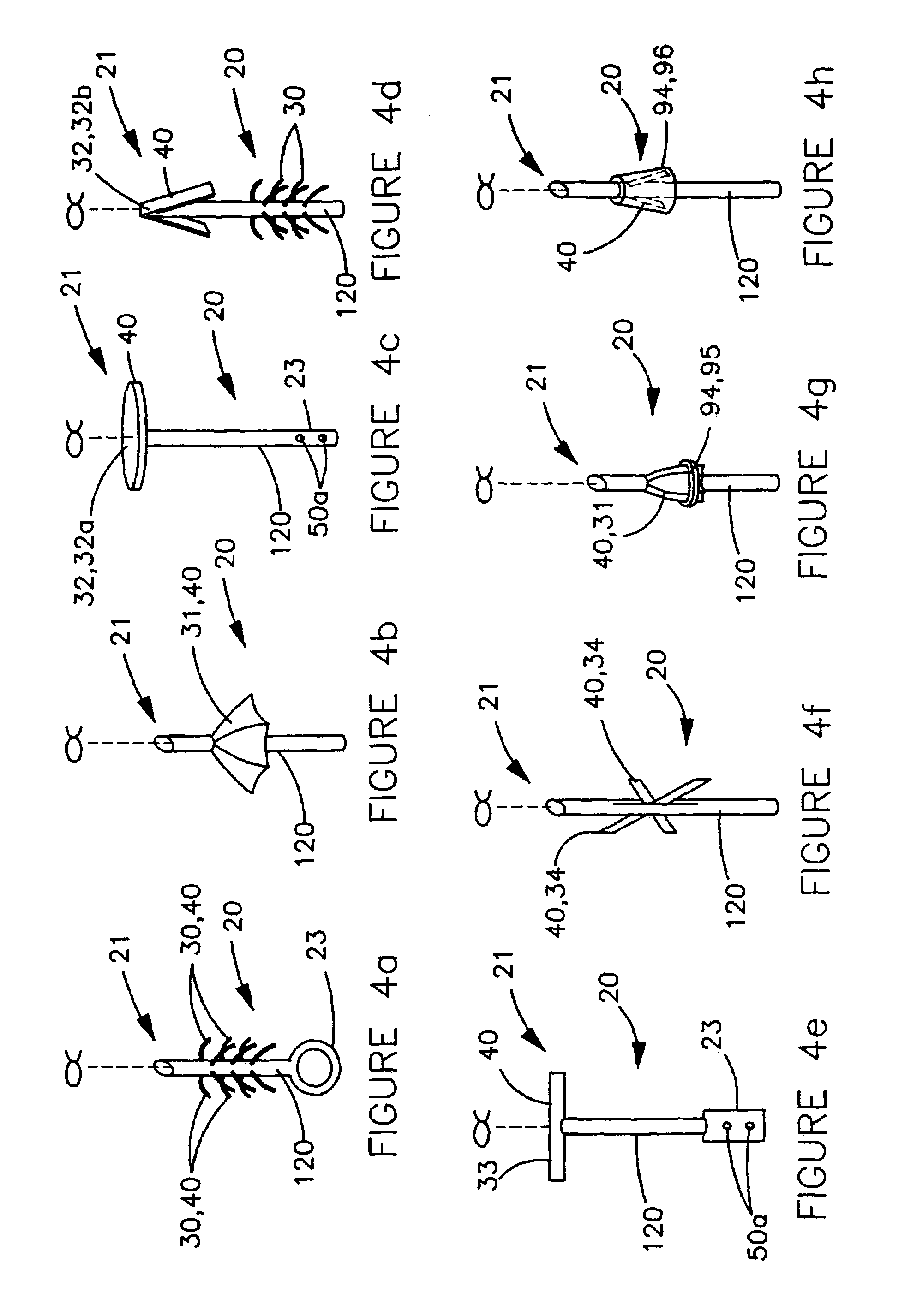Tissue anchor system
a technology of tissue anchors and stents, which is applied in the direction of prosthesis, surgical staples, surgical forceps, etc., can solve the problems of leaking of urine, loss of bladder neck support, and disabling sui
- Summary
- Abstract
- Description
- Claims
- Application Information
AI Technical Summary
Benefits of technology
Problems solved by technology
Method used
Image
Examples
Embodiment Construction
[0069]Illustrations of construction, design, and methods of operation of the invention are set forth below with specific references to the Figures. However, it is not the intention of the inventor that the scope of his invention be limited to these embodiments.
[0070]FIG. 1 illustrates one embodiment of the tissue-anchor delivery device 1. Delivery device 1 comprises a housing 2 and one or more finger grips 3, which comprise flats 4 on opposing sides of housing 2 designed to enable a surgeon to hold device 1. Finger grips 3 may be rings 6 (see FIG. 3b) through which the surgeon inserts fingers, a thimble (see FIG. 3a), a handgrip, or any other shape that enables a surgeon to hold delivery device 1. Finger grips 3 are unnecessary if housing 2 is adapted to be hand-held, such as a pen-shaped housing 11 shown in FIG. 1a.
[0071]FIGS. 1a and 3a illustrate an anchor stay 50. Anchor stay 50 comprises a portion of housing 2 adapted to retain an anchor 20 (not shown) thereto, as described bel...
PUM
 Login to View More
Login to View More Abstract
Description
Claims
Application Information
 Login to View More
Login to View More - R&D
- Intellectual Property
- Life Sciences
- Materials
- Tech Scout
- Unparalleled Data Quality
- Higher Quality Content
- 60% Fewer Hallucinations
Browse by: Latest US Patents, China's latest patents, Technical Efficacy Thesaurus, Application Domain, Technology Topic, Popular Technical Reports.
© 2025 PatSnap. All rights reserved.Legal|Privacy policy|Modern Slavery Act Transparency Statement|Sitemap|About US| Contact US: help@patsnap.com



